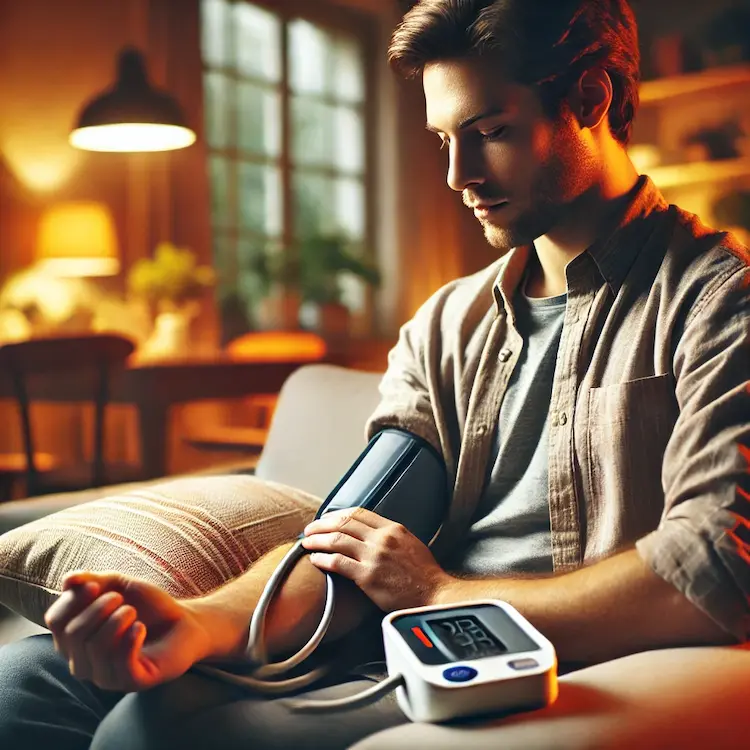Anxiety and white coat hypertension are two conditions often linked to elevated blood pressure, but the underlying causes are different. Anxiety, a mental health issue, can contribute to increased heart rate and blood pressure. White coat hypertension, on the other hand, is a phenomenon where a person experiences higher blood pressure readings in a clinical setting due to nervousness or stress. Both conditions are important to understand because they can affect your overall health if not managed properly. In this article, we’ll explore each condition, discuss their health impacts, and provide tips on how to manage them effectively.
Anxiety is a feeling of worry, nervousness, or unease, typically about an imminent event or something with an uncertain outcome. While occasional anxiety is a normal reaction to stress, chronic anxiety can have more serious implications. It can cause a rise in blood pressure, which over time, can lead to health issues such as cardiovascular disease, stroke, or kidney problems.

White coat hypertension refers to a situation where a person experiences elevated blood pressure readings when measured by a healthcare professional, often due to nervousness or anxiety in a clinical environment. Unlike primary hypertension, which is caused by lifestyle factors or other health conditions, white coat hypertension occurs only in specific settings.
While white coat hypertension may not be as harmful as regular hypertension, it can still be concerning. If left unchecked, it may contribute to actual hypertension over time.
Though both anxiety and white coat hypertension can lead to increased blood pressure, the causes, implications, and management strategies differ significantly. Let’s compare the two:
| Aspect | Anxiety | White Coat Hypertension |
|---|---|---|
| Cause | Psychological factors (stress, fear) | Stress or nervousness in medical settings |
| Effect on Blood Pressure | Persistent increase due to chronic anxiety | Temporary spike during clinical visits |
| Impact on Health | Long-term effects if chronic | Typically not harmful, but may lead to actual hypertension |
| Management | Therapy, medication, lifestyle changes | Relaxation techniques, home blood pressure monitoring |
| Prevalence | Common in those with anxiety disorders | Affects 15-30% of people in medical settings |
Both conditions are manageable with appropriate strategies, but understanding their differences is crucial for effective management.
Managing anxiety-related hypertension requires addressing both the physical symptoms of high blood pressure and the psychological factors contributing to anxiety. Below are some proven strategies:
CBT is an effective therapeutic technique that helps individuals identify and challenge irrational thoughts contributing to anxiety. By changing thought patterns, patients can reduce stress and anxiety levels, leading to better control of blood pressure.

Regular physical activity is one of the most effective ways to reduce both anxiety and blood pressure. Exercise promotes the release of endorphins, which improve mood and reduce stress. Additionally, regular exercise helps strengthen the heart and reduce overall blood pressure.
Mindfulness practices encourage individuals to focus on the present moment, reducing rumination and anxiety. Meditation can help reduce stress, calm the mind, and lower blood pressure.
For individuals affected by white coat hypertension, the key to management is reducing stress during medical visits and ensuring accurate blood pressure monitoring. Here are a few strategies to overcome white coat hypertension:
Deep breathing exercises or progressive muscle relaxation can help reduce anxiety before entering the healthcare setting. Practicing these techniques regularly will help lower overall stress levels, not just in clinical environments.
Using a home blood pressure monitor can provide more accurate readings outside of the medical environment. This can help individuals track their blood pressure in a relaxed setting and provide valuable information to their healthcare provider.
Regularly measuring blood pressure at home allows patients to distinguish between white coat hypertension and actual hypertension. It is important to take multiple readings at different times of the day to get an accurate picture of one’s health.
If white coat hypertension is suspected, patients should discuss their concerns with healthcare providers. A doctor may suggest wearing a 24-hour ambulatory blood pressure monitor (ABPM) to get an accurate reading of blood pressure over an extended period.
While white coat hypertension is generally not dangerous on its own, the underlying anxiety can have long-term health consequences. Chronic anxiety and stress are known risk factors for cardiovascular diseases, which makes it essential to address both the physical and mental health components.
Managing anxiety and hypertension together helps reduce the risk of cardiovascular events, improve overall health, and enhance the quality of life. Addressing these conditions proactively can prevent them from developing into more serious health issues.
By recognizing the impact of anxiety and white coat hypertension on health, individuals can take steps to manage these conditions, improving their overall well-being.